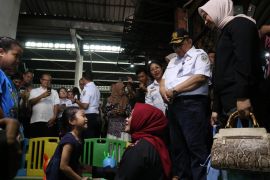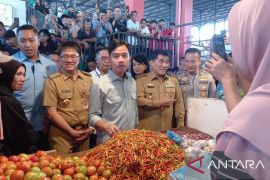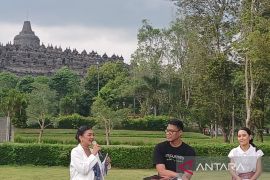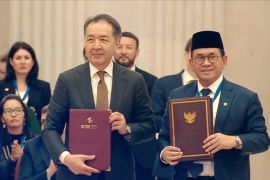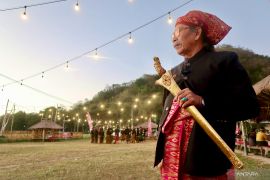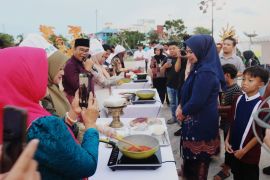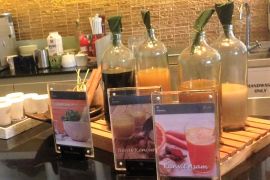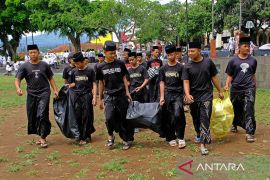Making wayang kulit puppets has been the 73-year-old’s source of income for 53 years.
The craftsman lives in Gegesik Kulon Tourism Village, Cirebon district, West Java, in a very simple house dominated by wooden furniture.
Interestingly, the terrace of the house is used as a workshop for making wayang kulit puppets, right from the stage of carving to coloring.
To make the puppets, Sawiyah uses the skin of female buffaloes from Sukoharjo, East Java, because it is more malleable compared to the skin of male buffaloes, which is thicker and cracks easily.
Puppets made from female buffalo skin can last for hundreds of years, he said.
The making of wayang kulit puppets
According to Sawiyah, after he buys the buffalo skins, they are first dried before being carved.
He said that each wayang has a standard size. For Cirebonese wayang kulit, the puppets are of three types in terms of size, namely Kidang Kencana (small size), Asmara Wulan (medium size), and Mega Mendung (large size).
Asmara Wulan puppets are more commonly used for shows, he added.
Sawiyah chooses to use his own powder paint to color the puppets.
For some colors, acrylic paint is usually used, even though the quality is not really good and the color fades quickly.
In addition, he also uses high-quality wall paint to maintain the color as it is water-resistant and durable even though the price is relatively high.
Normally, Sawiyah mixes several colors into five color gradations. Then, to measure the thickness of the shadow puppets, they are usually tanned.
According to him, the skin from one buffalo can approximately be used to make about 10–15 small puppets.
Sawiyah said that there is a difference between puppets that are designed to be displayed at home and those used in performances. Puppets that are meant for display are more artistic than those that are used for wayang kulit shows, he explained.
He said that his income is uncertain because making wayang takes a long time: around 20 days to a month, depending on the complexity of the design.
Although the price of the wayang kulit puppets is quite high, he revealed that his income only reaches Rp75 thousand per day.
Most of his puppet buyers are collectors of wayang souvenirs from Pedalangan, Central Java.
In addition, there are also a number of officials who come to his house to see the making of wayang kulit puppets—one of them was Minister of Tourism and Creative Economy, Sandiaga Uno.
Sawiyah said the cheapest wayang kulit he made sold for Rp500 thousand, namely the Punakawan model.
Recognized craftsman
According to Sawiyah, the local office has only recognized two wayang kulit puppet craftspersons, including him.
He expressed regret over the low interest among young people in becoming wayang kulit puppet craftspersons.
Nevertheless, he said that he will continue to share his knowledge of puppet making for free with young people around him.
He further said that those who want to learn usually visit his home to directly observe the process of making puppets and try to make puppets on their own in their homes later.
He informed that researchers from Banyumas had met him and said that the quality of the wayang kulit puppets in Cirebon was good enough to be marketed.
Sawiyah said that the micro, small, and medium enterprise (MSME) guidance program provided by the government has helped him, but he said that currently, the raw materials for wayang kulit are hard to find.
"But I love wayang. Even though I'm 73 years old, I'm still active. It's a shame now that my eye health is disturbed because I'm already 73," he remarked.
Sawiyah said that to buy puppets, his buyers directly visit his home.
The government in his area has not provided maximal guidance because there has been no continuation of the coaching that had previously been carried out, he added.
To this end, he said he hoped that the government would develop a studio for making wayang kulit puppets so that his knowledge can continue to be passed on.
Need for regeneration
Head of the tourism and creative economy sub-department of South Jakarta, Rus Suharto, who earlier visited Cirebon district on August 4–5, 2022, for a Tourism Awareness Group (Pokdarwis) event, said that the regeneration of wayang kulit puppet craftspersons is needed by carrying out training to pass on knowledge of the craft.
He expressed the hope that the government would provide funds so that wayang kulit can continue to be developed and passed on.
"If there is no regeneration, additional government facilitation is needed through wayang (puppet) making competitions and wayang show competitions," he said.
According to Suharto, if combined with a culture-based creative economy, tourist attractions will create a unique identity that can attract tourists.
In addition, public infrastructures should also be complemented by a creative economy in the aspects of aesthetics, beauty, comfort, security, and memories.
He noted that his suggestions could also be used as a reference for post-pandemic national economic recovery.
“For the acceleration of economic recovery, reduce benchmarking abroad because unique local wisdom exists in Indonesia,” he remarked.
Related news: Place for Indonesia's shadow puppetry in gleaming world of youth
Related news: Enjoying Indonesia’s cultural diversity in Setia Darma House of Masks and Puppets
Editor: Rahmad Nasution
Copyright © ANTARA 2022



